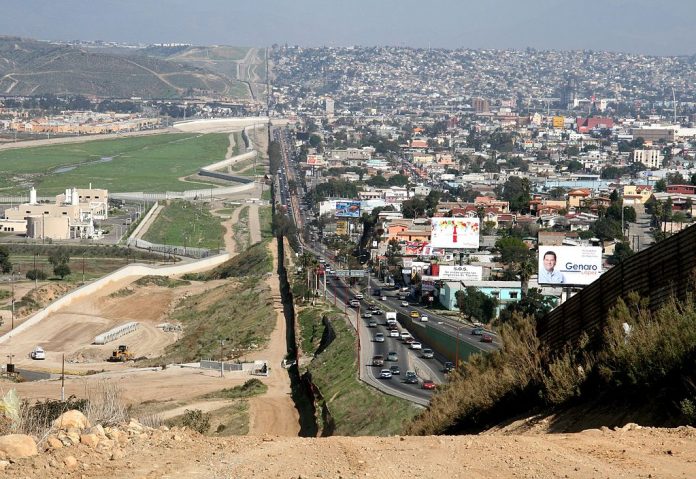
Jan. 2 (UPI) — American border agents fired tear gas canisters across the U.S.-Mexican border on Tuesday in an effort to drive back a group of approximately 150 migrants.
According to a statement issued by the Customs and Border Protection agency, the migrants attempted to cross into the United States by climbing over and crawling under a small fence along the border between San Diego and Tijuana, Mexico.
A larger group initially approached the border, but at least a third turned back when they saw the presence of Border Patrol officers.
According to CBP, some of the migrants attempted to pass small children wrapped in jackets and blankets over the barbed-wire fence, while others threw rocks at Border Patrol agents.
“To address the rock throwers assaulting agents and risking the safety of migrants attempting to cross who were already on the U.S. side, both smoke and minimal countermeasures were deployed,” CBP said in a statement. “Agents deployed smoke, pepper spray and CS gas [tear gas] to a position upwind of the rock throwers and south of the border fence.”
Twenty-five of the migrants, including two teenagers, were arrested after making it over the border fence.
“Once again we have had a violent mob of migrants attempt to enter the United States illegally by attacking our agents with projectiles,” said Katie Waldman, a spokeswoman for the Department of Homeland Security. “As has happened before — in this and previous administrations — our personnel used the minimum force necessary to defend themselves, defend our border, and restore order.”
According to the Los Angeles Times, several migrants claimed to have not witnessed rock throwing, while others said they disagreed with the act.
“I don’t like that type of violence of people throwing rocks,” Silvio Sierra, of Honduras, told the L.A. Times. “We don’t like that type of violence of throwing rocks. The majority of people came in peace. Our intent was to walk up peacefully.”
Several of the migrants said they planned to approach peacefully, but had grown frustrated and confused by the U.S. immigration and asylum-seeking processes.





